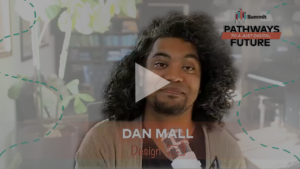Improving Patient Satisfaction in a Dual-Union Hospital
While we have continued to make significant strides year over year with our quality initiatives in our 265 bed community teaching hospital we just can’t seem to gain a whole of traction in improving and sustaining our HCAHPS. Our multi-year journey focused first on quality, then staff engagement (both showing marked improvement) and now all focus is on patient satisfaction. Several years ago we engaged with Studer but that became cost-prohiitive and the bargaining units refused to support the initiatives and became barriers.
One of our biggest challenge is that we have two unions: one for the RNs and technical clinical staff (CWA) and one for everyone else: EVS, Dietary, Transport, PCAs (SEIU). Anecdotally, the two unions do not get along very well.
Whenever leadership attempts to implement new initiatives related to patients satisfaction the unions each in their own way protest, with the majority of the complaints surrounding “staffing”.
Any advice on how to move patient satisfaction initiatives forward in the face of staff and bargaining unit resistance?




This is also a problem in our organization, one that I have not encountered in my previous places of work in Texas and Tennessee. Ideally, creating a positive reinforcement/incentive model where stakeholders will receive monetary (or similar) incentive if the goals were achieved may help. In our hospital, we are now giving $5,000/year (in $1,250/quarter achievement) to MDs, and $2,000/year ($500/quarter) to NP/PAs when notes are done 95% within 4 business days from encounter. The question is whether there are resources which could be allocated to these incentives.
This is a challenge for us as well. Is there more opportunity for generating engagement, either at the staff level, or (ideally) at the union leadership level? Patient satisfaction scores being tallied by patients now will affect net income over the next few months to years, so we all have a stake in improving HCAHPS. What is less certain to me is what exactly these surveys measure, and how responsive the results are to our interventions. However, it seems likely that frequent messaging and role modeling around patient service would bend the metrics in the right direction. I hypothesize that the global message to staff is more important than any specific intervention. Staff benefit from being reminded that a large percentage of whatever healing occurs is dependent on a caring, trusting relationship perceived by the patient. Our patients rely on us to overcome all our technological and institutional barriers in order to be present for them. When rooms are clean, call lights are responded to quickly, food is warm, and care teams know what each other are doing and saying, then the patients will have positive regard for their caregivers. It’s hard to reduce this to a formula or a checklist, but the spirit of it needs to be over-communicated, until it is part of the culture of the institution.
Did you already bring in patient representatives ? In our hospital we have a form client representative counsel that is part of a discussion like this. And they can help in defining, either by themselves or organising the right input from patient groups, the opinion of the patient. For example, it is hard to hide behind ‘staffing’ as an argument when patients tell that it is mainly attitude they would like to see improve.